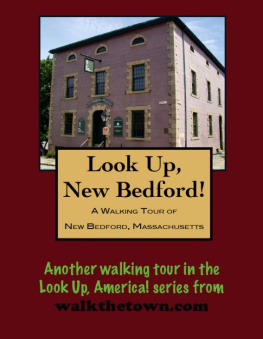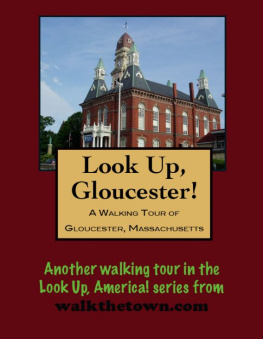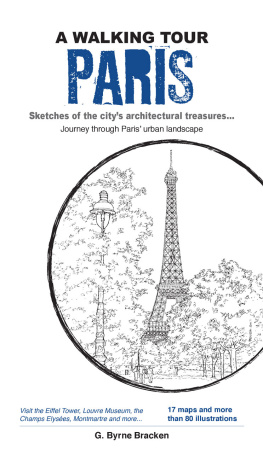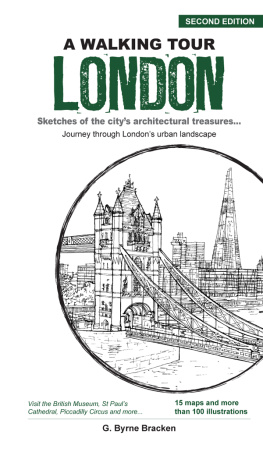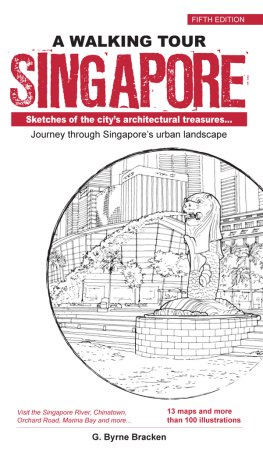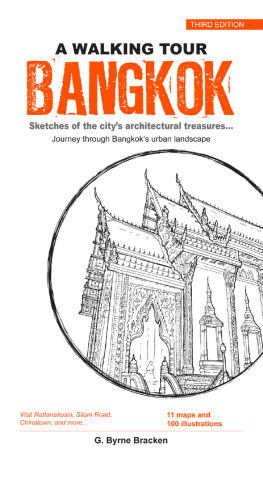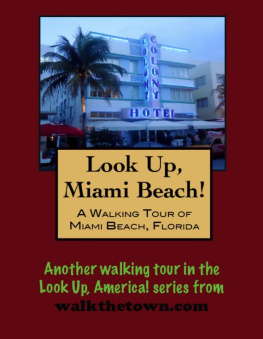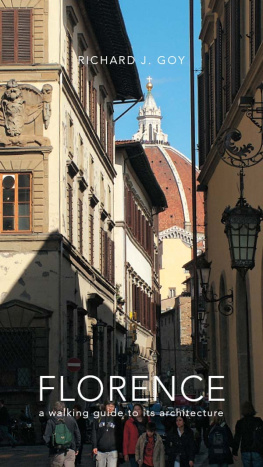A Walking Tour of New Bedford,Massachusetts
a walking tour in the Look Up, Americaseries from walkthetown.com
by Doug Gelbert
published by Cruden Bay Books atSmashwords
Copyright 2010 by DougGelbert
All rights reserved. No part of thisbook may be reproduced or transmitted in any form or by any means,electronic or mechanical, including photocopying, recording or byany information storage and retrieval system without permission inwriting from the Publisher.
The town of Dartmouth was formed fromso-called common land on June 8, 1664, and included the territorycalled Acushena, Ponagansett and Coakset. The bounds of the townwere defined June 3, 1668. From this territory New Bedford was setoff February 23, 1787. Therefore, New Bedford was founded as a townin 1787 and incorporated as a city in 1847.
First mayor Abraham Howland and the newcity fathers were predominately Quakers. Followers of the religiousteachings of Englishman, George Fox, the Quakers referred tothemselves as the Society of Friends and Children of the Light.Their spiritual mission in life was to spread (diffuse) the InnerLight of Christ to all they encountered. So here they were, theChildren of the Light, employed in the lighting industry, supplyingwhale oil to the entire world for lighting.
The town had grown since theeconomically difficult days of the American Revolution a decadeearlier. With its well-protected deep harbor, by 1823 New Bedfordhad surpassed Nantucket in the number of whaling ships leaving itsharbor each year and by 1840, with the arrival of the railroad andeasier access to markets in New York and Boston, the port was thewhaling capital of the world. New Bedford was for a time therichest city in the world.
This walking tour will begin at theVisitor Center for the New Bedford Whaling National HistoricalPark, just a couple of blocks from the waterfront of the city thatlit the world...
New Bedford Institute ofSavings (National Park Visitors Center)
33 William Street
The sandstone-faced building began lifein 1853 as the New Bedford Institute of Savings. The Third DistrictCourt moved in to these quarters in 1896. The roofline is marked bya pediment. THIRD DISTRICT COVRT OF BRISTOL is carved into thesecond story in prominent letters. Today it serves as the VisitorCenter for the National Park Service, entered on William Streetthrough a granite balustraded porch.
STAND AT THE INTERSECTION OF2ND STREET AND WILLIAM STREET.
Citizens NationalBank
41 William Street
Originally built for the CitizensNational Bank, circa 1877, this building now houses a populardowntown eatery called Freestones City Grill. The lower level ofthe building is encased in Sandstone blocks made from LongmeadowFreestone (hence the name of the restaurant). The Citizens NationalBank name is carved into the stone above the front entrance of thebuilding that shows Romanesque influences. The building was damagedby a fire in 1934, which destroyed the third floor. At the time wasthe home of the New Bedford Acushnet Cooperative Bank. It laterbecame Haskels, a restaurant and bar, where in 1951, there was asecond fire that scorched several interior wooden pillars in whatis now the main dining room. That damage is still visible. AfterHaskels, it became the Pequod Lounge. Both Haskels and The Pequodenjoyed colorful local reputations. In 1978, the building waspurchased by the current owners. During renovations, the new ownersdiscovered much of the original mahogany woodwork hidden behindinterior false walls and ceiling, and the original marble floorsunder asphalt tiles. After almost six months of renovations, thenew owners restored the original woodwork and flooring as well asadded many new interior features.
United States CustomHouse
37 North 2ndStreet
Built between 1834 and 1836, this whitegranite Greek revival building continues to serve its originalmission. It is the oldest continuously operating Custom House inthe nation. Where whaling masters registered their ships and cargomore than a hundred years ago, todays commercial fishing and cargoships continue to log duties and tariffs. The building is stillhome to the New Bedford office of the U.S. Customs Service as wellas offices of the National Marine Fisheries Service and theNational Park Service. The first Post Office in New Bedford wasoriginally located here. The front of the building features fourlarge granite columns and classic portico. It was designed byRobert Mills, the architect of the Washington Monument and leaderof the Greek Revival movement in the United States. Theconstruction was authorized in 1832 by an Act of Congress and cost$31,740, including the land.
Andrew RobesonHouse
32 William Street
Built in 1821, thisFederal-style mansion was the home of Andrew Robeson. Robeson hadsuccessful interests in whaling, banking, and printing and wasfeatured in the 1851 book, Rich Men ofMassachusetts . Originally, the mansion wasin the center of the block on Second Street and had grounds andgardens that covered nearly two square blocks. In the winter of1978, the 500-ton mansion was lifted off its foundation and movedinch-by-inch through a parking lot and onto William St. It was thenmoved down William St., literally scraping between the U.S. CustomHouse and the Citizens National Bank building. The building wasturned 90 degrees and rested on its current foundation. In themiddle of the move came the Blizzard of 1978. It took four monthsto move the building 400 feet.
TURN RIGHT ON 2NDSTREET.
Benjamin RodmanMansion
50 North SecondStreet
This Federal-style mansion was builtbetween 1820 and 1821 by Benjamin Rodman, a founder of the NewBedford Institution for Savings (NBIS). The granite block mansionwith quoined corners is an example of the simplicity of Quakerstyle and was the home of the Rodman family until 1872. By 1890,the mansion had been completely surrounded by storefronts and for aperiod of time it was used as a warehouse. The operators of thewarehouse demolished the interior walls and opened a large hole inthe granite front wall of the building. The mansion was reacquiredby local ownership in 1965 and the exterior granite walls andwindows were restored.
Bourne Warehouse
47-49 N. SecondStreet
A fine example of late19th centurycommercial architecture, this warehouse was erected in front of theAndrew Robeson mansion and housed an auction business sellingeverything from antique furniture to ships. The building wasrestored in the 1970s.
TURN RIGHT ON ELM STREET.TURN RIGHT ON N. WATER STREET.
Rodman CandleWorks
72 N. WaterStreet
Originally built by Samuel Rodmanaround 1810 as a factory, this building housed one of the firstspermacetti candle making operations in New Bedford. Spermacetticandles were made from whale oil and provided a high-quality, longlasting light source. The building is constructed of large woodbeams and two-foot thick walls of granite rubble. The stuccoexterior provides the illusion of granite block construction. Thebuilding was damaged in a 1960 fire and was abandoned for manyyears. In 1976, a private group, the Candleworks Associates, boughtthe building and restored it.
TURN LEFT ON RODMAN ANDCROSS THE PEDESTRIAN BRIDGE TO THE WATERFRONT.
New BedfordWaterfront
In 1840-41, New Bedfords whalingindustry employed nearly 10,000 people and was capitalized at morethan $12 million. All along the waterfront, maritime-relatedbusinesses thrived. Outfitters, shipyards for building andrepairing whaling vessels, bakeshops, barrel makers, caulkers,carpenters, sail lofts, ropeworks, and whale oil refineries wereactive at the waters edge. At the foot of Rodman Street, justnorth of where the overpass stands today, were the wharves ofParker, Howland, and Hazard. Jutting out into the harbor to thesouth were the wharves of other wealthy merchants such as Rotch,Taber, and Merrill. Today, the port of New Bedford is home to thelargest commercial fishing fleet on the East Coast and consistentlyone of the top five ports in terms of dollar value of its catch inthe United States.
Next page
